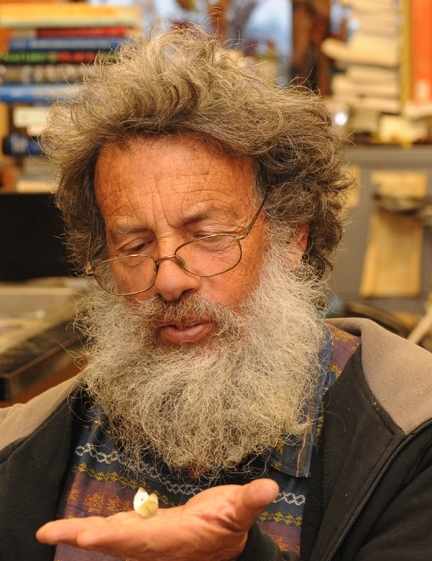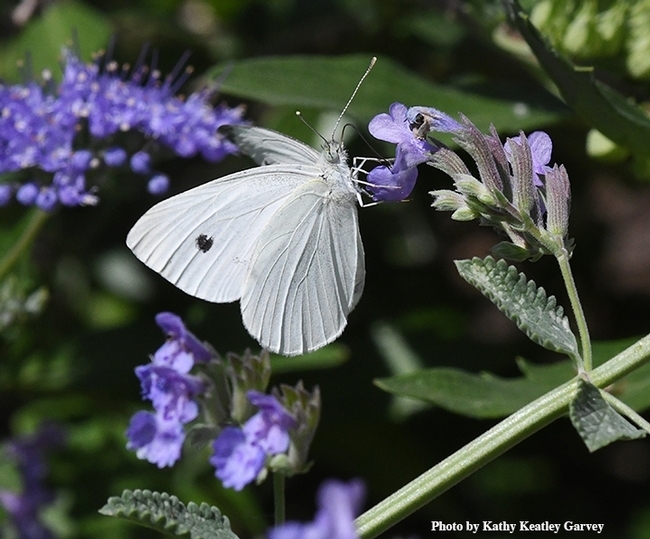
As you know, Shapiro sponsors the annual Cabbage White Butterfly Contest--the first person who collects the first cabbage white of the year from the three-county area of Sacramento, Solano and Yolo wins a pitcher of beer. It's a research project he's been working on since 1972 to determine the first flight of Pieris rapae. He's usually the winner because he knows where to look.
His email began suspenseful. Did he find it? Did he find it?
"The fog lifted to low stratus overcast, which very slowly broke up into stratocumulus, with a very light north wind aloft--it was calm at the surface," he wrote. "I had thought today might be a day to look for the first rapae, but by 11.30 a.m, the sun was still not visible and it was 53F in Davis. So I went to lunch."
"While I ate the sun broke through. When I went outside at 12.05 it was up to 57F and some blue sky was showing. I made a snap decision to go to West Sacramento even though there was no time to go get a net. I told myself that what I really needed was the first-flight date. Catching the bug was just for the contest. I would trust my own sight record! So off I went. I was in West Sacramento from 1 to 3 at the warmest part of the day. I had about 70% sunshine. The high was 63F but it was so humid that it actually felt warmer with the sun out. It was still dead calm. The vegetation is progressing now."
His email STILL kept us in suspense. Did he find it? Did he find it?
"The number of blooming Raphanus has doubled; there are thousands of Raphanus and Brassica nigra plants in vegetative condition; four Melilotus alba have come into bloom. One Avena is blooming--just one. The Conium rosettes are immense--as big as last year--and as is its allelopathic wont, its areal coverage has expanded greatly. I am very attentive to dorsal-basking rapae in the vegetation and looked constantly for them; no dice."
Did he find it? Did he find it?
"But it felt so like a rapae day... And then at 1.21 p.m. a butterfly flew by and nectared at Raphanus. It was a fresh (of course!) female Pyrgus communis--as it turned out, the only Lep (Lepidoptera) of the day. OK, now get this: in the entire project, i.e. since 1972, communis has never been recorded earlier than rapae in the Valley. But that's just for starters. Communis has never been recorded in January before, either. The earliest is ii.1.14, which happens to have been in West Sac; so today beat it by 10 days. Communis has been recorded in February at West Sacramento only 8 times--the usual first-flight date is in March!-and those were ii.16.01,ii.23.07,ii.17.12,ii.1.14,ii.12.15,ii.22.16 and ii.22.17. That is, of the 8 February records, 6 were during or adjacent to the drought. 2018 and 19 returned to the classic March start. Pyrgus scriptura almost always starts first, occasionally on the same day.
Did he find it? Did he find it?
"Not this year! Rapae still awaits. But this communis craziness is better than a beer! What next?"
What's next is the contest is still open. Beer for a butterfly. Suds for a bug. (For the rules, see the Bug Squad blog)
Attached Images:
